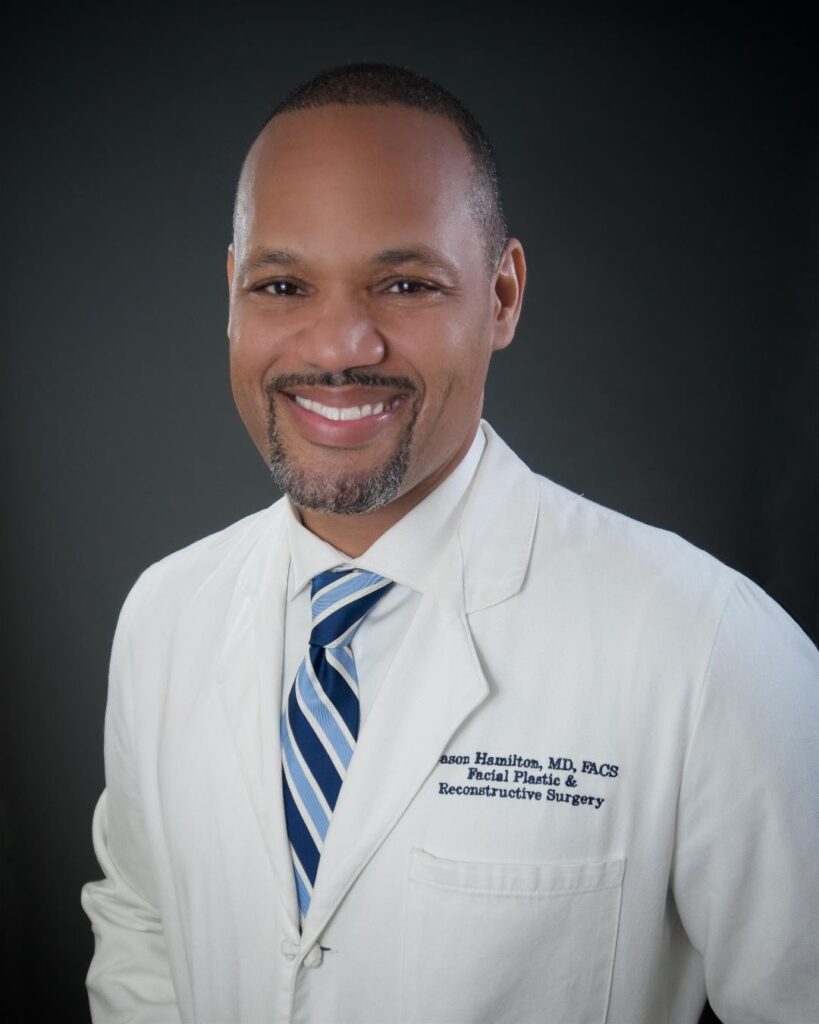Dr Jason Hamilton discusses the increasing demand for ethnic rhinoplasty and the technical and cultural considerations that set it apart from traditional approaches.
As demand grows for cosmetic procedures that honor cultural identity, ethnic rhinoplasty has emerged as a focal point for both patients and surgeons. Unlike traditional rhinoplasty, which often aims to conform to Western ideals of beauty, ethnic rhinoplasty prioritizes individualized results that enhance rather than erase distinct facial features. According to the American Academy of Facial Plastic and Reconstructive Surgery (AAFPRS), rhinoplasty remains the most requested facial procedure—and a significant portion of those involve revision surgeries, often the result of inadequate consideration of ethnic anatomy and aesthetics.
Jason Hamilton, MD, a double board-certified facial plastic surgeon in private practice in Los Angeles and the former AAFPRS Group Vice President for Diversity and Inclusion, has seen firsthand how ethnic rhinoplasty requires both technical precision and cultural understanding. In this interview with Plastic Surgery Practice, Hamilton discusses the rising demand, the anatomical and cultural complexity of the procedure, and the importance of board certification and continued education among surgeons.

Plastic Surgery Practice: Why do you think ethnic rhinoplasty is seeing increased demand, and how has that influenced your practice in recent years?
Jason Hamilton, MD: There’s been a noticeable rise in demand for ethnic rhinoplasty—and it’s driven by more than just general interest in cosmetic procedures. Patients today are more informed and increasingly appreciative of the unique beauty that comes from cultural diversity. Many no longer want to simply “fix” a feature—they want to enhance it, while staying true to who they are.
This demand isn’t just for rhinoplasty in general—it’s highly specific. Patients are now more aware that ethnic rhinoplasty exists as a specialized approach, and they’re actively seeking experts who understand and can deliver the nuanced results they envision.
In my own practice, I’ve always focused on highlighting each patient’s individuality. Every nose I work on is different because every face—and every identity—is different. But lately, the shift has been in volume. There’s been such a significant increase in ethnic rhinoplasty requests that it’s become my primary focus.
PSP: How do the anatomical and cultural considerations in ethnic rhinoplasty differ from traditional approaches, and what specific challenges do they present?
Hamilton: Ethnic rhinoplasty differs from traditional approaches in both cultural and anatomical ways. On the cultural side, every community has its own beauty ideals. These standards aren’t random—they’re shaped by history, tradition, and the features commonly celebrated within a group. Each culture has its “muse,” so to speak—those facial features considered balanced, refined, and beautiful. When surgeons overlook these ideals, the results often feel off. You get a nose that may be technically sound, but visually disconnected from the rest of the face.
Now, on the anatomical side—this is where things really turn on their head. Many ethnic rhinoplasty patients come in thinking their nose is too large. But in reality, the nose is often small and looks wide because it lacks the structure needed to create definition.
So rather than reducing, we often do the opposite. We build. We strengthen the nasal frame to bring out structure, contour, and refinement. Ironically, making the nose “bigger” often makes it look smaller and more defined.
This goes against the grain of what most people associate with rhinoplasty. Traditional techniques tend to focus on removing tissue or reducing size. In ethnic rhinoplasty, we’re often adding—cartilage, support, projection—with the same goal of achieving facial harmony. It does sound counterintuitive, and frankly, it is. Many of the methods I use in primary ethnic rhinoplasty are the same ones typically reserved for revision surgery—rib grafts, bridge augmentation, and structural support techniques. That’s how complex it is. For many patients, their first procedure looks a lot like what would usually be a secondary correction. That’s the difference—primary ethnic rhinoplasty surgery is like revision rhinoplasty.
PSP: In the AAFPRS survey, nearly 80% of members reported performing revision rhinoplasty. What are the most common issues you see in revision cases related to ethnic rhinoplasty?
Hamilton: Some common issues in revision cases related to ethnic rhinoplasty include overcorrection, asymmetry, scarring, and an operated look. The biggest problem is that often, patients are frustrated and want to abandon the whole idea of getting a nose job and make it all go away. But we can’t go backward and make it look like it never happened. Standing still is not a presentable option, and we have to go forward from where we are now.
PSP: You’ve said ethnic rhinoplasty is about refinement, not erasure. Can you elaborate on how you approach maintaining a patient’s ethnic identity while achieving their aesthetic goals?
Hamilton: Whether it’s a first-time procedure or a revision, the core principle stays the same: preserve identity while enhancing balance. That starts with listening. Patients come in with vision boards full of noses they love—and I encourage that. It’s helpful. But I also remind them that admiration doesn’t always equal compatibility. A beautiful nose on someone else might not suit their face. I spend most of my consultation time—80%, easily—talking about aesthetics: what’s realistic, what’s ideal for their features, and how we can get there. Technique matters, of course, but alignment on vision matters more. If we’re not on the same page about the outcome, we shouldn’t move forward. Excitement alone doesn’t create results—clarity and collaboration do.
PSP: What training or experience should plastic surgeons seek out if they want to expand their skills in ethnic rhinoplasty?
Hamilton: For surgeons who want to improve in this area, the path is clear: seek training that goes beyond the basics. Look for programs and workshops that focus specifically on ethnic rhinoplasty. Learn from mentors who do this work every day. Keep showing up—at conferences, in cadaver labs, and in conversations about cultural beauty standards. The learning never stops.
PSP: What message do you most want patients—and your peers—to take away from the AAFPRS’s current focus on board certification and cultural competency in this area?
Hamilton: Through emphasizing board certification and cultural competency in ethnic rhinoplasty, the AAFPRS aims to raise awareness about the importance of understanding and respecting diverse cultural backgrounds in plastic surgery and I believe both are non-negotiable. Patients should know their surgeon is both qualified and mindful—someone who can handle the technical complexity and the cultural responsibility that comes with this kind of work. My hope is that more of my colleagues will continue to reflect, learn, and grow so we can offer thoughtful, personalized care to everyone—regardless of where they come from or how they define beauty. PSP
Photo: ID 159265457 © Rido | Dreamstime.com




